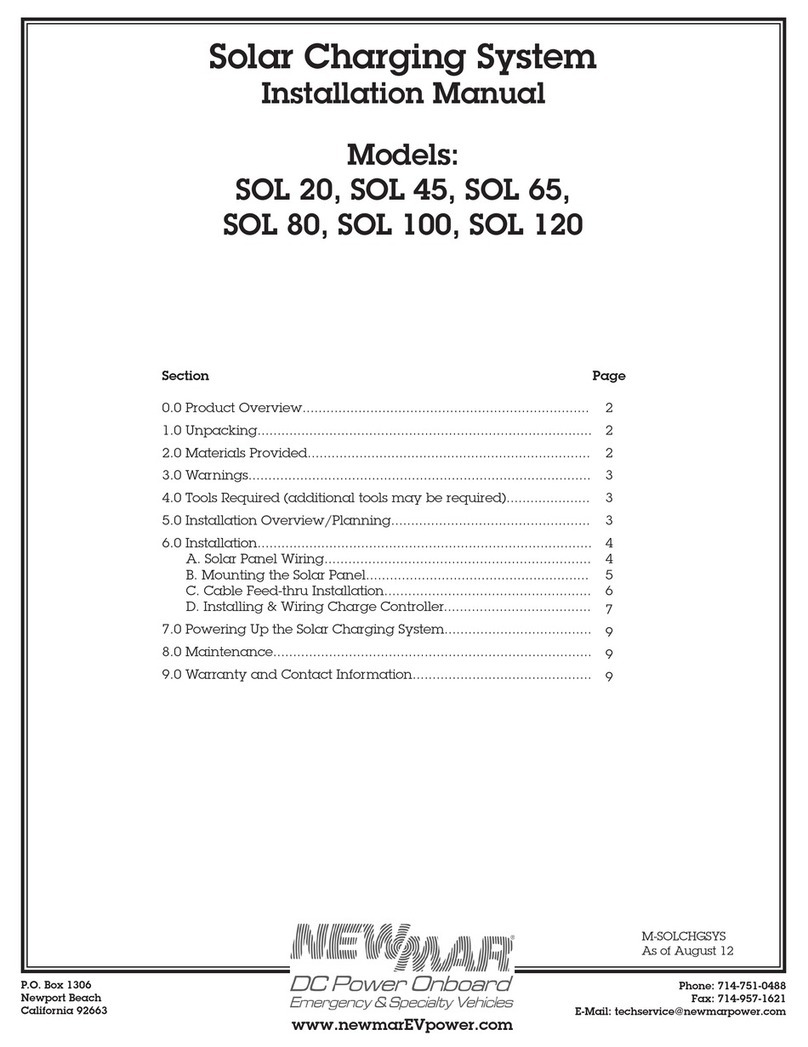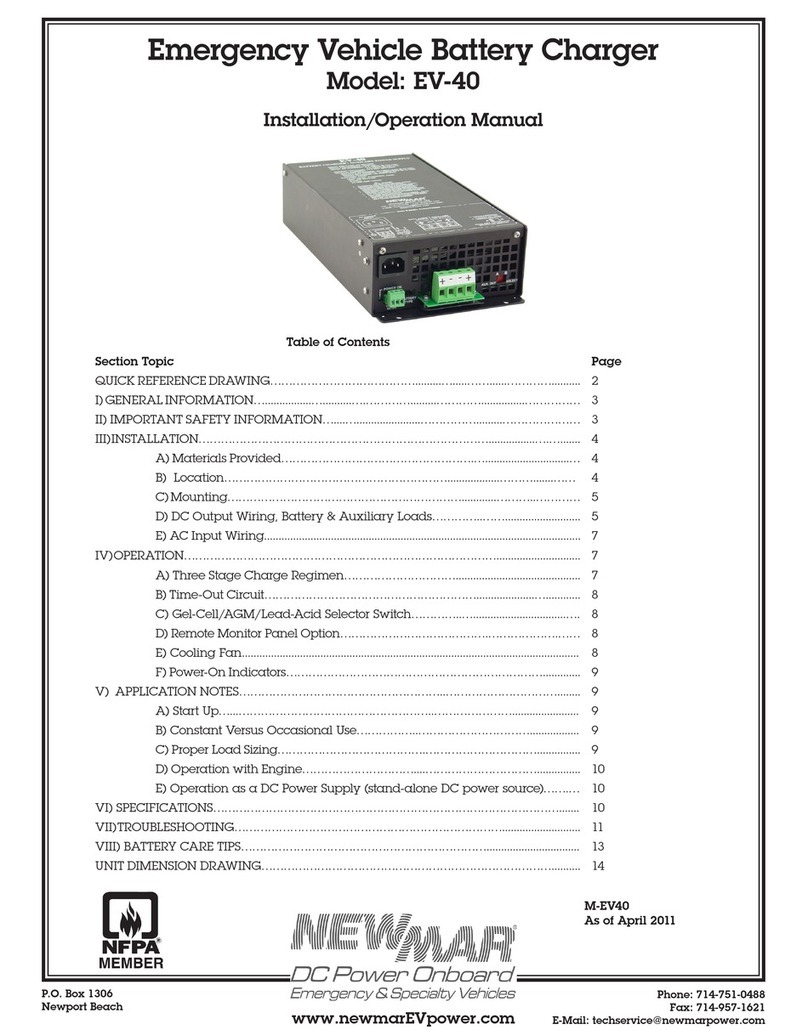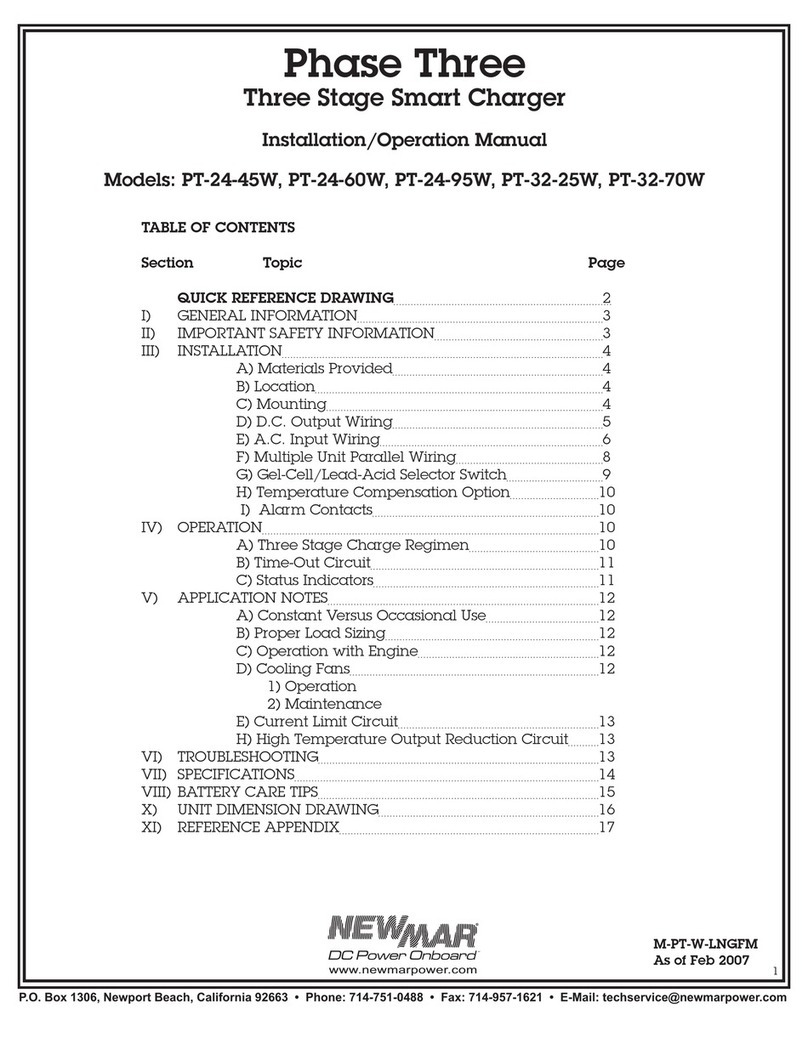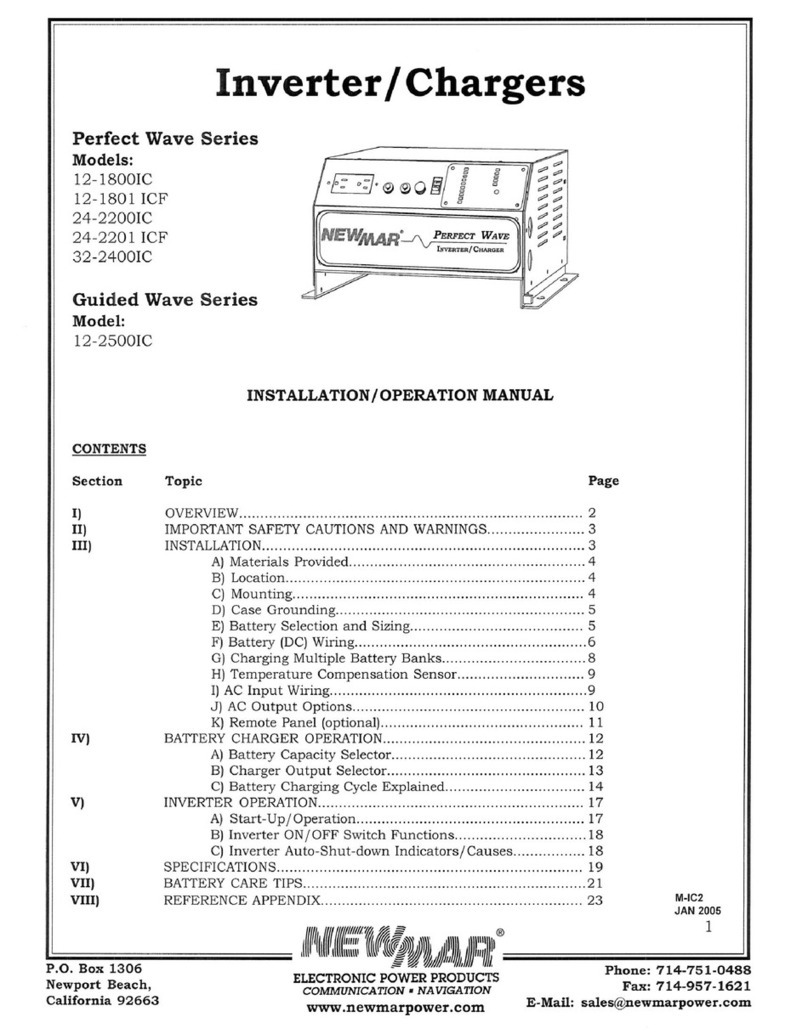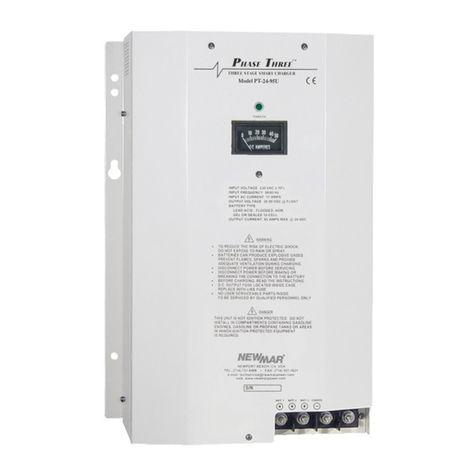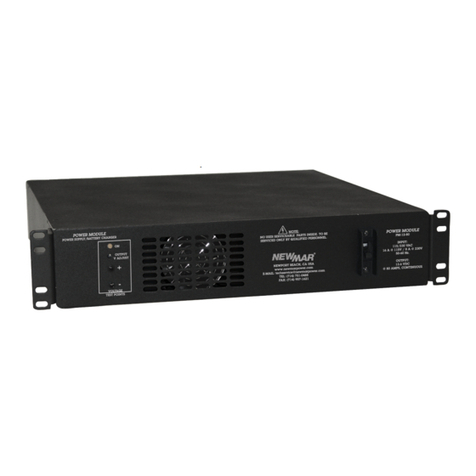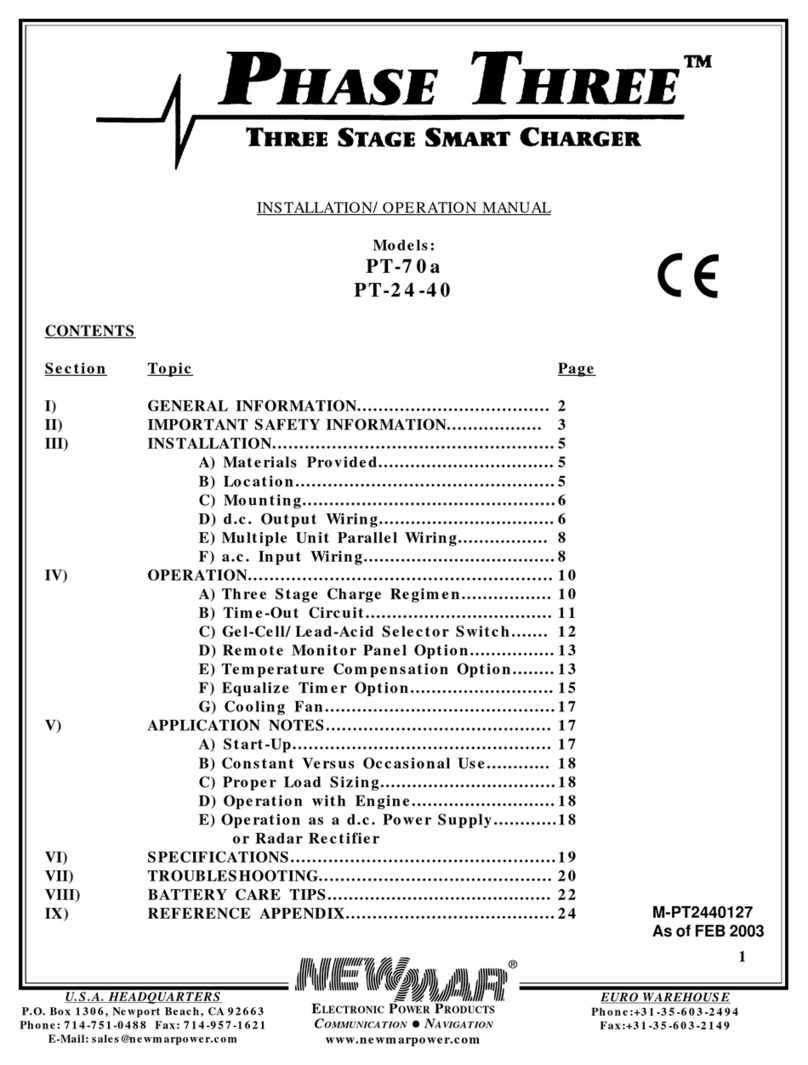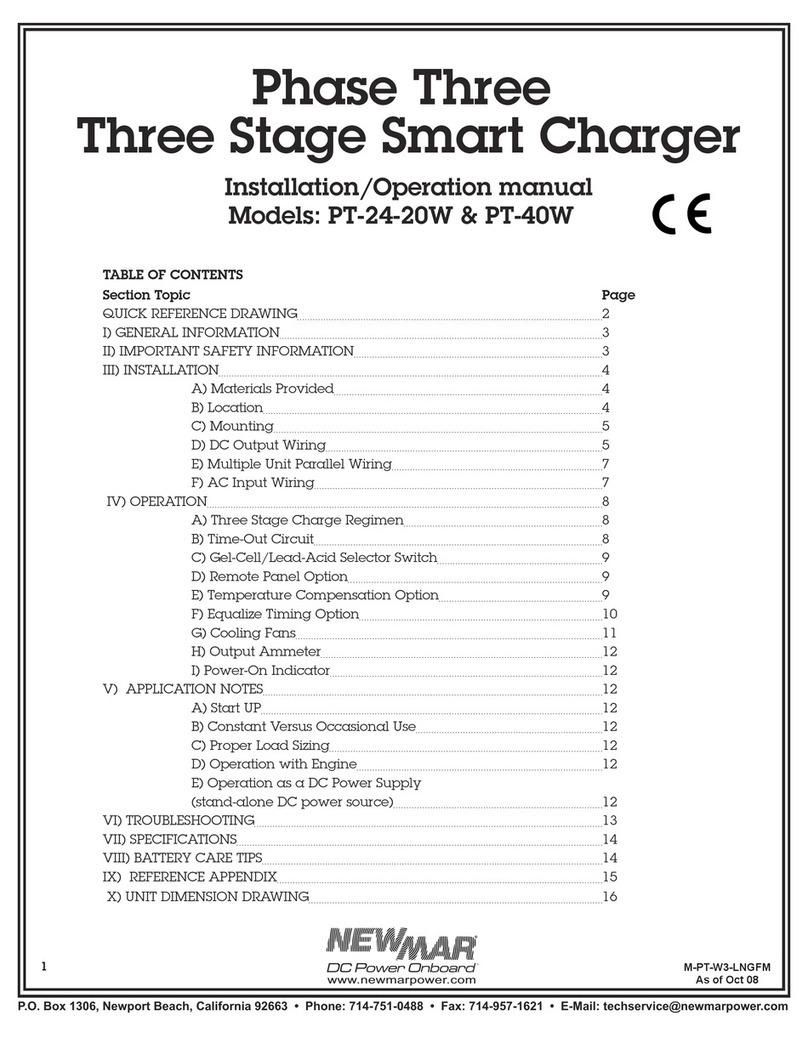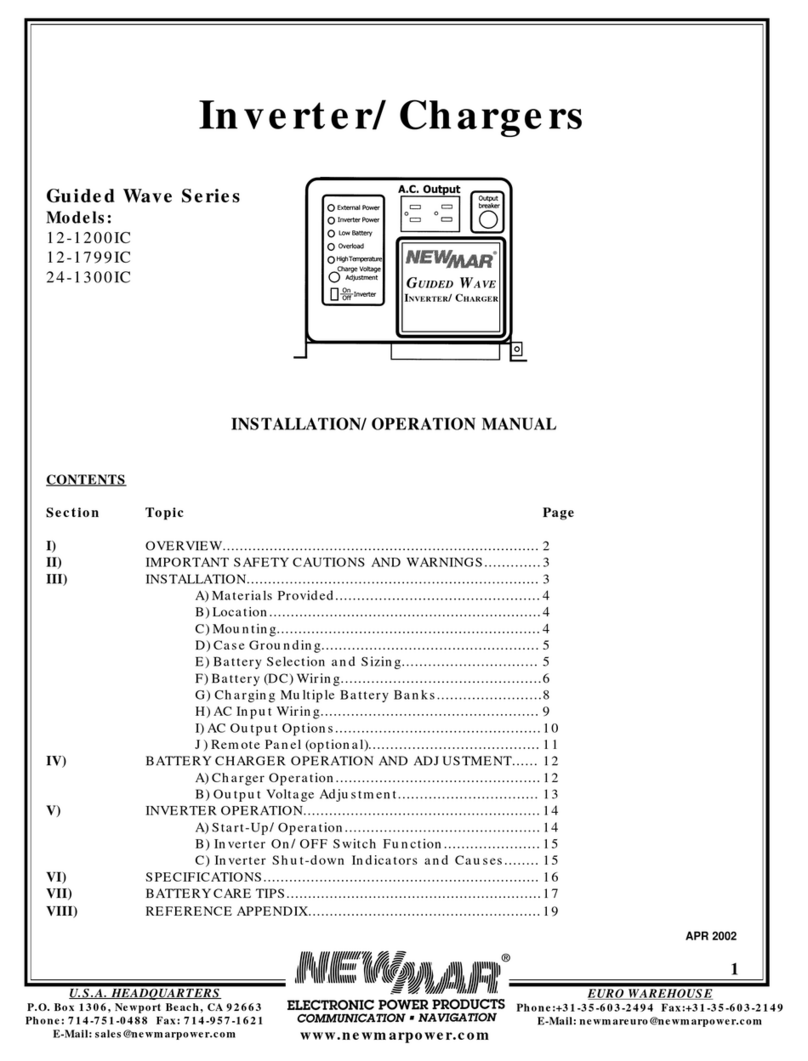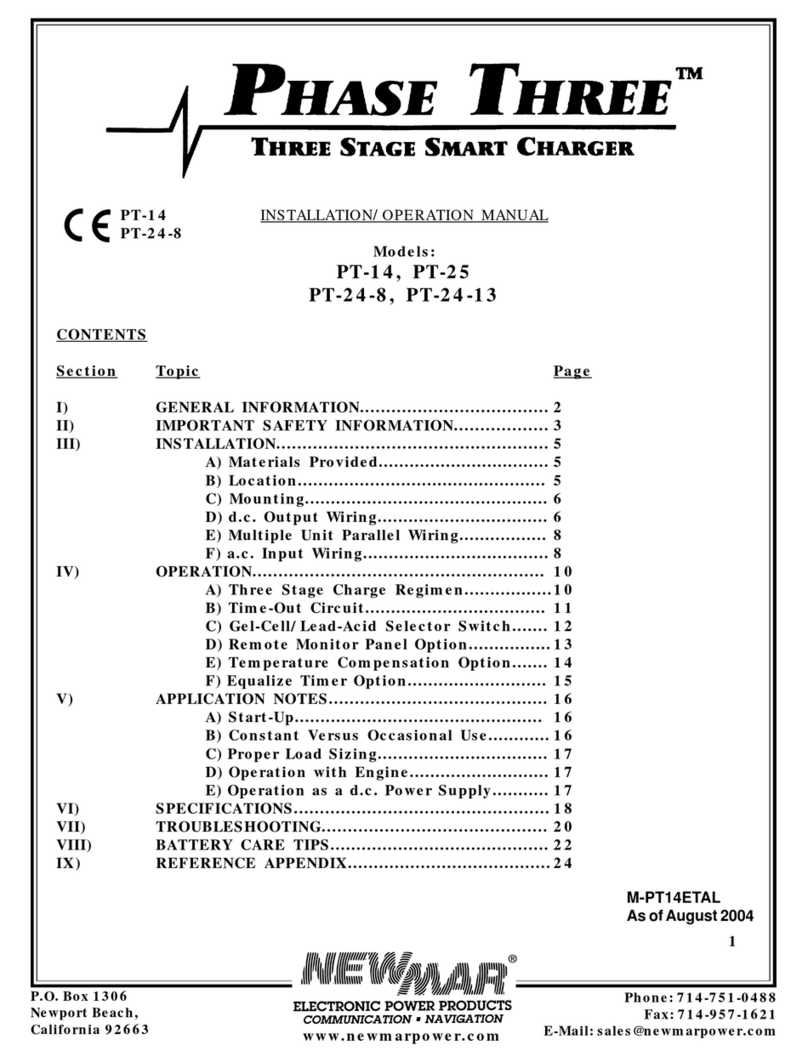
U.S.A. HEADQUARTERS
P.O. Box 1306, Newport Beach, CA 92663
Phone: 714-751-0488 Fax: 714-957-1621
EURO WAREHOUSE
Phone:+31-35-603-2494
Fax:+31-35-603-2149
www.newmarpower.com
ELECTRONIC POWER PRODUCTS
COMMUNICATION !!
!!
!NAVIGATION
8
a.c. input for the charger must be routed through a fuse or circuit breaker on an a.c. distribution
panel with proper safety/earth chassis ground in accordance with all applicable local codes and
ordinances.
Color coding of the installed a.c. cord is as follows:
Black.....................................a.c. Hot (fused)
White....................................a.c. Neutral
Green....................................a.c. Ground (safety, earth)
If the plug on the factory-installed cord is unsuitable for the available outlet it may be
cut off and replaced. Pay careful attention to color coding of the wires as noted above. Do
not attempt to replace the entire cord by removing the charger cover. Evidence of entry into the
charger will void the warranty.
(In marine applications) All charger wiring should be installed in accordance with UL,
U.S. Coast Guard and/or A.B.Y.C. regulations and recommendations, as well as all
relevant local codes. See REFERENCE APPENDIX at the end of this manual for sources.
A note about the a.c. input fuse: The a.c. input of your charger is protected by an input fuse
which is located inside the unit. Due to the current limiting characteristic of the
charger, it is highly unlikely that this fuse will blow unless there is some other malfunc-
tion within the charger. This fuse is not user-replaceable. Contact the factory if you
suspect a blown input fuse. (See Troubleshooting section.)
F) Setting the Gel-Cell — Flooded/AGM Switch
According to most battery manufacturers, the ideal charge regimen for gel-cell and
flooded (wet) lead-acid or AGM (Absorbed Glass Mat) batteries differs somewhat.
The gelled electrolyte in a sealed battery may be lost or damaged by high voltage and,
once lost, cannot be replaced as it can with a wet lead acid battery. Manufacturers of
gel-cells usually recommend an ideal charge voltage which is slightly lower for a gel-cell
than a lead-acid battery. (The charge regimen recommended for AGM batteries is typi-
cally similar to that of flooded lead-acid batteries.)
However, when the charger is in the float voltage mode over lengthier periods of time,
gelled electrolyte in a sealed battery is not susceptible to evaporation, as is the non-
immobilized electrolyte of a wet lead acid battery. This evaporation can be accelerated by
the applied voltage. Consequently, the ideal float voltage is slightly higher for a gel-cell
than a lead-acid or AGM battery.
The ideal charge/float regimen has been programmed into the Phase Three Charger for
either sealed gel-cell or flooded lead-acid/AGM batteries. Simply make the proper selec-
tion for your battery type via the slide switch on the front of the charger, prior to turning
the unit on.
Note: A wide variety of batteries are now available which do not conform to conventional
